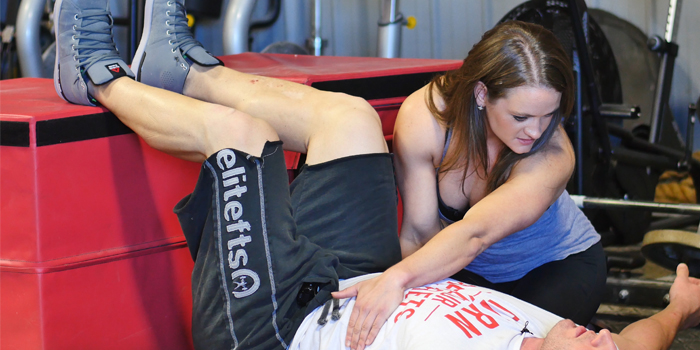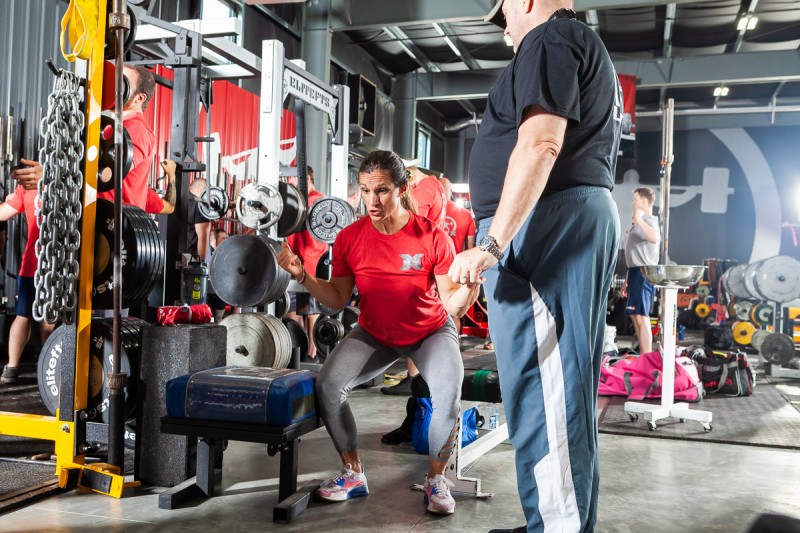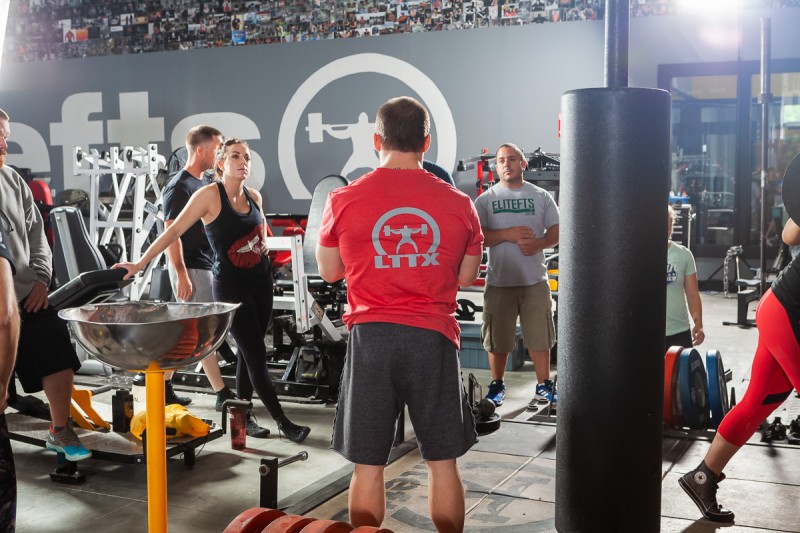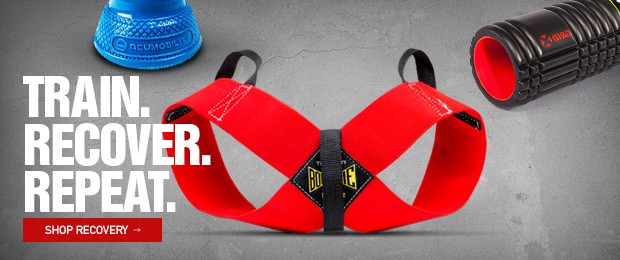
I’ve written about injury and what to do once you are injured, how to modify training, and how to mollify the mindset. As extensive as it is, it’s hit too close to home for me this year. What I see pretty consistently across the board with every lifter with whom I work in physical therapy is that the “rehab”process is far more about learning and communication than the “coaching” and training process is, and I think this needs to shift substantially—meaning we need to spend more time learning rather than going through our training as though we’re going through a grocery list.
RECENT: Movement Patterns Beyond One Plane
Where I see this happen the most is that once I start to work with someone on injury rehab, we begin to talk about his or her entire training in far greater depth, and it’s not uncommon for the person to say something along the lines of, “Holy cow, I wish I’d paid attention to these details before I needed them.” Part of the reason for this is that having the details before talking to me makes it a lot easier for you and I to maximize our time together because you’ve already processed the details yourself. This leads to a more thorough plan than just some traditional “rehab” movements to try to fix things (because this process can be so much more powerful than that!), but the other reason is that many lifters will acknowledge if they’ve really been “on” and honest about these things. They’re pretty transparent in saying they would have shut down before their bodies forced them to shut down. I get several lifters who meet me saying, “Now what?” who end up saying, “I wish I’d paid attention to what I felt.” People can cling to articles as long as they want to, but at the end of the day, more than any article someone can quote to you, proprioception and awareness are two of your most powerful languages to learn when it comes to pushing the envelope to get higher absolute strength and going through the rehab process to shut down whatever inhibitory or protective mechanisms are overriding.
Multiple audiences should have a stake in this idea:
- The lifter who HASN’T had this type of injury: In this sport, you probably will at some point, and there are a few warning signs to watch for before it happens so that you can hopefully prevent it.
- The lifter who has and will be quick to identify it ahead of time before it happens next time.
- Coaches who need to be able to read between the lines of what’s happening with an athlete’s performance.
There are a number of facets that you as a lifter need to be honest about or that you as a coach need to keep your athletes honest about to avoid crossing the line. Knowing these things and thinking about them will also make your rehab notably smoother, and your hindsight in terms of why/how will become more accurate. The more accurate this becomes, the more you will learn from it. If you want to be around this sport for more than a few years, you’ll need to have some sort of learning curve here.
Some of the major ones include:
Are there certain aspects of your daily habits you can change?
There’s a lot of talk among endurance athletes and field athletes about the idea that “you can’t outperform your other 23 hours of the day” no matter how many corrective exercises you do. If you know that sitting for too long flares up an issue, save yourself time and money and be accountable to changing this on your own first. Don’t pay a PT or chiropractor to babysit you to find accountability. Use us as your last line, when you’ve already controlled the variables on your end. If you need help with determining some of these things, absolutely use us, but most people with whom I work in person or remotely can say with distinction that there are certain variables from day to day that affect them that they know about but are just too lazy to actually change. I have had multiple ankle surgeries and have super-rigid feed/ankles; I know that on a day I need my squat pattern to be on, I should probably avoid certain shoes. Yes, it’s a pain in the ass. But it’s also a powerful tool that costs you almost nothing and acts as an adjunct to whatever mobility work you should be doing.
Are you actually recovering?
Do not blow this one off even if you’ve already asked yourself; I made that mistake earlier this year, and it may be one of the single best ways to avoid having the injury to begin with. It has also been one of the best ways to facilitate getting back to things more quickly and strongly than expected. This needs to be clarified and written in bold: Absolute strength and recoverability from specific volumes, intensities, and frequencies are not the same between lifters. A good coach will know this and modify your training with regard to these factors. I have the benefit of learning from some of the best coaches in the world… and very few of them have their athletes doing the same things. If your program looks like your training partner’s, that may not be a bad thing—unless you’re getting entirely different results. Part of this is physiological in terms of our makeup, but a good portion of this is also determined by how your day-to-day is spent. Someone with poor sleep patterns, in a high-stress job, with a high-stress home, who has the same relative strength as another athlete with consistent sleep, with moderate job stress, and with supportive relationships will recover worse. Period. It’s not a reflection of his or her success or failure as an athlete or of who he or she is as a person. Some of us have more control over our environments than others do, so stop comparing your volume and intensity to another lifter’s. Stop comparing yourself to anyone, period. There’s some literature looking at variables such as mood, grip strength, and generalized overreaching-type qualities that people generally associate with peaking but that are debatable at best. If you feel trashed, if you’re not enjoying training, and if you’re getting random aches and pains every session or multiple times a week, something needs to change.
Recoverability aside, are you layering one poor session on after another?
This may be more of an ego check for both athletes and their coaches, because as much as you verbally state, “Looked good,” you know that sets build, and as important as confidence is, I think the role of “yes men” has perpetuated the issues here. Heaviness will rarely look perfect, but saying, “Looked good” when there were 600 things to improve on is a slippery slope of a lifter starting to handle heavier weights with more frequency despite the fact that he or she hasn’t earned the proficiency to touch them. One bad session where weights moved like garbage, your line felt all kinds of wrong, and you couldn’t lock in is one thing, but building poor habits consistently will hurt, and there are patterns you can get away with only for so long without experiencing accumulated tissue stress. You make small compensations through these movements to offload what might hurt, and eventually, you run out of places to compensate, and tissue that has accumulated mechanical stress without recovery will tell you so.

Are you performing a movement a certain way because it looks good on another lifter (maybe one of your favorites) or because a coach told you to, even if it feels awkward or painful to you?
I can’t count the number of athletes I’ve worked with who consistently say that one variation or another hurt but that their coaches have everyone squat the same way so they had to continue, or that something like sumo pulling feels painful but that their coaches told them to “stick it out and just get used to it” and they ended up suffering injuries later on stemming from their changing their main movements. I am a big fan of variability, especially in a prolonged base-building or offseason cycle, but not every person is made to squat, pull, or bench the same way. As much as we may all love to pull like Ed Coan, the fact of the matter is that we can’t look exactly the same based not only on bone structure but also on how our nervous systems have adapted to training over time, as well as our individual physiology. The bottom line is, no matter how much you want to “make” a particular stance, grip, tempo, or “style” work for you, if you’re feeling more than the growing pains of a new movement and are experiencing pain in areas you haven’t before, feeling notably less mobile and less recovered, or feeling fatigue in places that your gut tells you isn’t “right,” it probably isn’t for you. The sooner you ditch trying to make a square peg fit in a round hole, the sooner you’ll find a “better” option. Your coaches and training partners need to be your allies in this, not people who tell you dogmatically what you “need” to do.
Do you have your own indicators?
I believe this, honestly, to be the best thing you can do for yourself—and the best part of this article. Although there is such a thing as paralysis by analysis, the thing every single person with whom I work walks away with is knowing what his or her indicators are when it comes to knowing when to push it and when to stay on the cautious side and maybe even take -2.5% on that day. These references can be simple things that you feel/note throughout the day or that maybe you sense/feel only with training but that go beyond the basic feeling of whether or not you’re in your groove. Coaches SHOULD be working with their lifters to help to determine what some of these things are because they’re the number-one way to sense when we need to put the breaks on. These are subtle and take some communication to figure out, and I highly encourage athletes to work with me or with their coaches to articulate some of these things through injury rehab or through the strongest points in their cycles, which is where they’ll be more likely to tap the “on” button whether their bodies are or aren’t ready.
Certain examples from lifters with whom I’ve worked include being able to proprioceptively feel or sense a certain part of the body, like a heel; keeping the ribs down without “overstabilizing” one side; feeling a strong sense of the feet push into the floor; or feeling like you’re overusing the neck to brace. I’ve worked with someone who has said that if he can’t feel his left heel, he knows that later that session, he’ll likely get his hamstring or SI pain back. Therefore, he modifies depending on the day rather than digging himself into the hole of a pain cycle, inflammation, and poor movement that can get worse between sessions or that requires a prolonged period of time to actually fix. These things are subtle but, as you can imagine, are certainly helpful to know before injury happens. They can also be hugely helpful as you or one of your athletes is getting back under the bar and having a hard time knowing when to push it and when not to. Obviously, there’s no hard-and-fast rule, and there are always great days even when things feel like trash, but these types of indicators are the things that coaches can, and should, be developing in their athletes provided that they aren’t hyperfocused on overanalyzing. They should be approached as exactly what I’ve titled them as indicators—one or two of many things that are merely meant to provide a data point based on proprioception.
Hindsight is often 20/20, and having certain variables on your radar before you “need” to know them lends clarity to a situation MUCH more quickly, thus making the “hurt” a heck of a lot easier to deal with, as there’s a little clarity to it. More than that, the best lifters I know have an awareness of these things without becoming paralyzed by them. Having a slightly “off” day doesn’t mean they sandbag. Rather, they’ll pick one thing, like absolute weight, or bar speed, or position, and make the most of the details as much as they possibly can that day. Don’t wait until you’re hurt to start asking, “Now what?” I never want to see anyone in this place, but if you DO get there, having a way to package some of this information will give you and your PT a good common language for getting you back to performing.












1 Comment